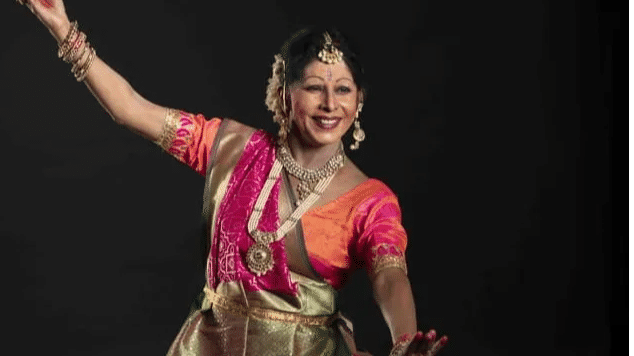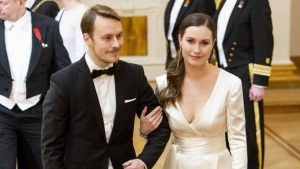Padmashri
and Sangeet Natak Akademi awardee Shovana Narayan is one of the most celebrated
Kathak maestros of all time and has mesmerised the audience with her
performance around the globe. A student of Pandit Birju Maharaj, the veteran
performer says that she lives and breathes Kathak and “all my thoughts and
feelings are poured out through this medium”.
The
70-year-old also says that young children, who are primarily students of
Kathak, are completely devoted to the practice of this art form. However, when
we talk about Bollywood, she says it is an effective medium for reaching out to
the masses within the shortest period, but for any medium to be an effective
medium, it also has to be ensured that the correct message is being streamed to
the general mass.
“It
is here that unfortunately due to inadequate knowledge about who the actual
Kathak performers were, the representation of Kathak has been quite off the
mark,” she said in an interview with Opoyi before her live digital performance as a
musical tribute to the Oscar Nominee & BAFTA Awardee Tabla Wizard Pandit
Chatur Lal on his 55th death anniversary on October 18. It was organised by Pandit
Chatur Lal Memorial in association with IndusInd Bank.
Excerpts
from the interview.
Opoyi: Would you like to recall some of the works of Chatur Lal ji that made you
feel connected with his musical journey
Narayan: I heard Pt Chaturlal ji at a couple of concerts at Sapru House in Delhi in the
sixties. On those occasions, he had accompanied different artistes on the
sitar. If I remember correctly, one was with Pt Ravi Shankar and the other with
Nikhil Banerjee. During the moments when the table player displayed his skill,
he mesmerized the audience with his artistry and dexterous finger work on the
tabla. What was beautiful about the two programmes was that he seemed to
understand the mood of the artiste perfectly.
Opoyi: Some
of your efforts towards making Kathak an internationally recognizable dance
form.
Narayan: I live and breathe Kathak and all my thoughts and feelings are outpoured
through this medium. I have given performances, lecture demonstrations, speaker
at various seminars widely all across the globe. Also, I have been regularly
teaching students from all corners of the globe. My articles and books have
reached out and are continuing to reach out to several artistes, connoisseurs,
and scholarly fraternity from across the globe.
Opoyi: How
you redefined the traditional dance form of Kathak through its fusion with
other international dance forms.
Narayan: My works with other art forms have always been harmonious collaborations where
neither of the artistes lost their identity and ever compromised with our art
forms, for each dancer is an expert in his or her field. Thus there is no
question of a dancer forsaking his style to adopt the other dancer’s style.
These collaborative works make all aware of how the same musical notes and how
similar movements look different according to the manner in which they are
approached; for example, a gravity-bound movement will have a very different
feel than the same movement performed with an anti-gravity approach. The
emphasis and expressions change accordingly. Thus dance, a universal vehicle of
expression, has many clothings, each being colourful and riveting – ranging
from the pure rhythmic to the most graceful and sublime and yet so different
from the other!
Opoyi: How
you are keeping the legacy of Kathak alive by nurturing the young dancers
Narayan: The young of today are not only very talented, hard-working but also focused.
How their young minds are moulded depends a lot on the environment. I have
found that young children, students of Kathak, despite all the hard work and
sincerity that Kathak requires, are completely devoted to the practice of this
art form. It is such a pleasure teaching them.
Then
lec-dems, workshops, seminars, writing articles, sharing knowledge through
articles, books and talks, and reaching out to the audience by de-mystifying
the depths of this beautiful art form, has always reached people. At the same
time, these mediums have motivated young minds to think and partake in them.
Then
of course, the young talents are given opportunities to present their art and
fruit of labour through the three Music and Dance Festivals that I organize
during the year.
Opoyi: Did Bollywood in any way help promote or endorse kathak to make it mainstream?
Narayan: Bollywood is an effective medium for reaching out to the masses within the shortest period. Auditoria and temple performers are confined to a small section of the public.
But for any medium to be an effective medium, it also has to be ensured that the correct message is being streamed to the general mass. It is here that unfortunately due to inadequate knowledge about who the actual Kathak performers were, the representation of Kathak has been quite off the mark. One has only to delve into documentation of foreign travellers and one would know that the original Kathak performers were Brahmin priests who performed in and around temples and to whom some of the singing girls came to learn dance movements and embellish their art. Hence an entirely incorrect image about Kathak has taken roots in the mind of the general mass. Also, any classical dance requires a lot of perseverance and dedication. Here again, what is being passed off as Kathak, is just a potpourri of various movements borrowed from popular styles.
Opoyi: Is it right to call that in the age of contemporary dance forms in Bollywood, our traditional art forms are fading?
Narayan: Owing to the power of the electronic media and the tilt of the mainstream print media towards commercial gains, Bollywood answers that call. But one should remember that the first moulding of minds comes from home. The seeds laid in the minds of the child at home will always be visible in his or her actions in later life even after heavy external influences. Thus every home needs to provide an atmosphere at home with an emphasis on Indian values, the importance of our classical art traditions as these classical performing arts are carrying the spirit and message of Indian philosophy and Indian traditions. Once the roots are firm, then despite all winds of globalization, the person will remain rooted and not be swept off his or her feet. This has a ripple effect for it will generate an atmosphere that resonates with this. Thus their actions in later life, in whatever vocation they may choose to be in, will reflect the depth of their personality and they will not become easily swayed by crass materialism and popularism.
One may also ask a question as to why despite having lucrative jobs, there are several instances of young people changing course and taking classical dance as a full-time profession. The answer, to my mind, lies in their realization that despite all the materialistic success that they were achieving, they needed something more meaningful, something with depth, something that gives them inner joy and peace of mind, which the classical arts give along with the fact that even while being wedded to Indian roots, they are simultaneously global citizens.
Opoyi: You are not just a Kathak veteran but also a scholar and a successful civil servant. Your mantra to manage both worlds?
Narayan: There is no unique mantra. I firmly believe that if one has passion, dedication, sincerity, total involvement combined with time management, one can chart out one’s path and there is no overlapping of commitments. Life is like a jigsaw puzzle and with sincerity to one’s pursuits, passions, the pieces find their rightful places to create a pattern.



